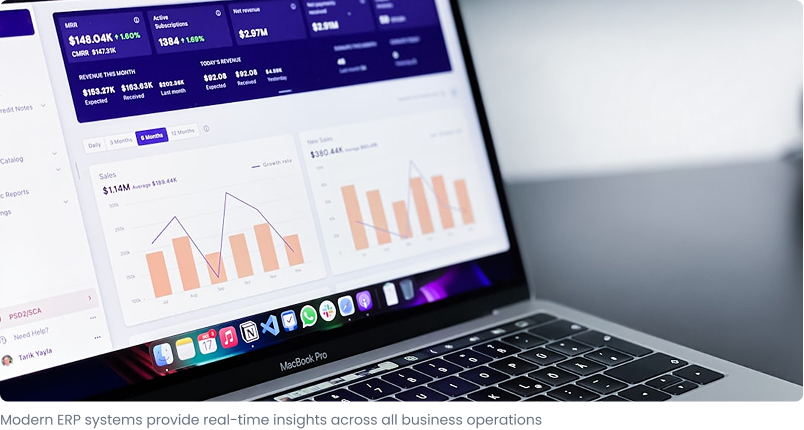
Understand your business process automation needs. This guide explains both ERP and CRM tools to help you choose the right one for your business.
When running a business, staying organized and efficient is key. That’s where tools like ERP and CRM systems come in — but figuring out which one you actually need (or whether you need both) can be confusing.
This simple guide breaks things down with clear explanations to help you decide what’s right for your business.
 Manual data entry across platforms
Manual data entry across platforms Duplicate information
Duplicate information Inconsistent reporting
Inconsistent reporting Delayed insights
Delayed insights Single source of truth
Single source of truth Automated workflows
Automated workflows Consistent data across departments
Consistent data across departments Real-time insights
Real-time insightsAn ERP (Enterprise Resource Planning) system is like the central control panel of your business. It connects departments like accounting, HR, procurement, inventory, and project management into one system.
Instead of working in silos or juggling spreadsheets, ERP brings all your business operations together — so information flows across departments in real time.
Think of ERP as the operating system of your business.
Pro Tip
Look for an ERP solution with customizable dashboards that allow each department to monitor their most relevant KPIs in real‑time while executives get a bird’s‑eye view of overall performance.
Example:
A construction company uses ERP to manage building materials, employee payroll, contractor schedules, and budgeting — all in one place.
A CRM (Customer Relationship Management) system is focused on your customers. It helps manage sales leads, client interactions, deals in progress, follow-ups, and support tickets.
If ERP handles what happens inside the business, CRM takes care of what happens outside — with your clients and prospects.
Think of CRM as your digital sales assistant.
Example:
A software company uses CRM to track leads from demos, assign follow-ups to the sales team, and store client history for better support.
Below is a comparison table highlighting the key features of ERP and CRM systems to help clarify the differences
| Feature | ERP | CRM |
|---|---|---|
| Primary Focus | Centralizes and streamlines internal business processes (e.g., finance, inventory, HR). | Focuses on managing customer relationships and sales activities. |
| Target Users | Operations, finance, supply chain, HR, IT departments. | Sales, marketing, customer service teams. |
| Core Functionality | Manages company‑wide operations like accounting, procurement, and manufacturing. | Manages customer data, sales pipeline, and customer support. |
| Integration with Other Systems | Highly integrates across departments for seamless data flow. | Primarily integrates with marketing, sales, and support tools. |
| Data Management | Centralizes internal operational data for departments. | Centralizes customer data and sales activities. |
| Real-Time Data Use | Uses real-time data for operational decisions (e.g., inventory levels, payroll). | Uses real-time customer data to improve engagement and sales processes. |
| Automation | Automates processes across departments, like payroll and procurement. | Automates sales workflows, like lead tracking and follow-ups. |
Not sure which system your business needs? Start by identifying the problems you're trying to solve:
You likely need an ERP if:
You likely need a CRM if:
You likely need both if:
Both ERP and CRM systems can transform how your business runs — they just serve different needs.
Start by identifying your biggest current challenge — is it in how you manage your team and resources, or how you engage with customers?
If you’re not sure, start small. Choose the system that addresses your most immediate need — and scale from there. Many businesses begin with CRM to grow sales, and then add ERP when operational challenges grow.
 ERP
ERPMarch 15, 2025
 ERP
ERPFebruary 28, 2025
.png) ERP
ERPJanuary 20, 2025
.png) Real Estate
Real EstateDecember 10, 2024